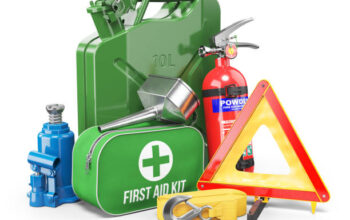The holiday cooking season is here, so if your cookware looks a little worn, it’s time to get a grip on your kitchen.
There are so many options for cookware, from cast iron and stainless to copper and aluminum, that it can be overwhelming. It is essential to understand the differences and which ones are best for different foods. We discovered that top-quality cookware could cost a little. We found many affordable pieces, and the more expensive ones in our tests can cook.
Do you need more storage space? Don’t worry. We have highlighted the appliances and cookware you need to create a delicious meal.
Cookware Confidence
Consumer Reports tests and buys stainless and nonstick cookware, Dutch ovens, and a range of frying pans, including cast iron, nonstick, stainless, carbon steel, carbon, and copper. Do you need help determining which type or types of frying pans to buy? Before you shop, take a look at the following information.
Sets vs. Open Stock
To determine which pots and pans need to be replaced or which pieces you would like to acquire, look at your current inventory. Open stock, which is the available individual pans and pots, is widely available. Open stock is the best way to save money on frying pans that have been scratched. It’s also the most popular way to sell cookware.
Consider your cooking style and choose the proper cookware set.
What’s Cooking?
Consider what you are most likely to cook often. This will impact your selection of pots. Cast-iron skillets are great for browning meats. Nonstick frying pans worked best for delicate foods like fish and scrambled eggs. Stainless is great for any food that requires browning or searing. Learn more about stainless frying pans.
A stock pot is excellent for boiling pasta or making soups, but if you prefer slow cooking, a Dutch oven might be the best option. A Dutch oven is versatile and can bake, brown, broil, boil, or bake bread. It can also be used as a stovetop oven. A versatile Dutch oven can cook just about anything. Why Every Home Chef Needs a Dutch Oven.
Match your cookware to your cooking top.
Consider how your new cookware will look on your cooktop. For smooth top ranges, flat-bottomed pans with no warping are necessary. Gas ranges are more flexible but still require good contact between the pan’s bottom and the burners. Induction cooktops require magnetic cookware. A magnet is a must-have for induction cooktops. If the magnet sticks to the bottom, it will work with an induction range/cooktop. Our ratings also note which pans can be used with induction.
Hard-coat anodized can be described as a way to describe a soft aluminum surface made into a hard surface. This has nothing to do with the nonstick coating that allows food to brown and not stick to the pan.
Cladding is the process of combining layers of metal to make cookware. The outer and inner layers may be made of stainless steel. However, the coating on the inside may contain aluminum, copper, or other conductive or magnetic materials. Clad may also refer to a material added to the bottom plate of a stainless-steel pan to enhance heat transfer.
To make the right choice for your cooking style, you should be familiar with the terminology used in cookware.
A serious cook’s kitchen is incomplete without quality cookware. Various cookware is essential, including a range of casseroles and pots. A $500 set of cookware will make your meals taste twice as good as a $250 set. Not necessarily. This is how you can create the ultimate culinary collection.
Choose Your Pieces
You will need a variety of pots and pans to make a set of cookware. This depends on your cooking type and how many people are involved. Manufacturers count a lid in boxed sets as a piece. It can fit more than one piece. If you only use a few details and have enough space to store the rest, a set with more elements may not be the best choice. Not all pieces can be considered to be part of a set.
Grab It Up
Online shopping is every day, but you should still shop at a store to pick up the cookware. Take a look at how the cookware feels in your hands. Think about how heavy it feels when you have food in your hands. The handles of the pot and pan must be easy to reach. Make sure the handle attachments are solid and tight. Check the packaging to determine if the cookware can go in the dishwasher.
Glass Lids
They allow you to view what’s happening inside the pot without lifting it off. They can also add weight and break, posing a problem for families with young children.




